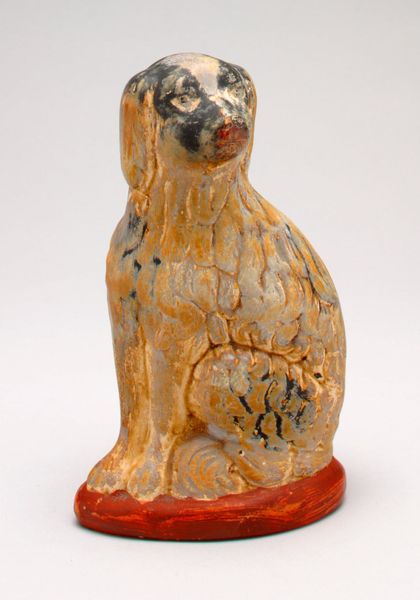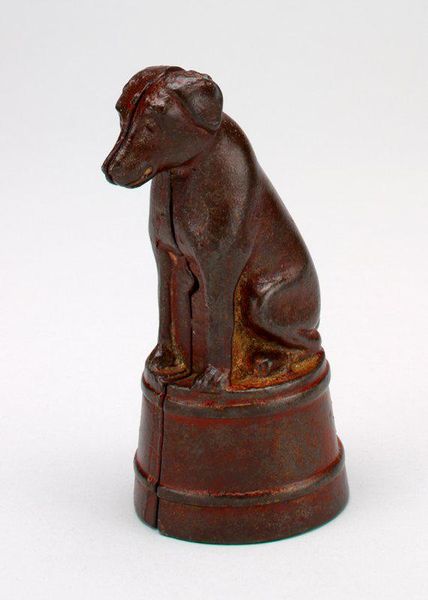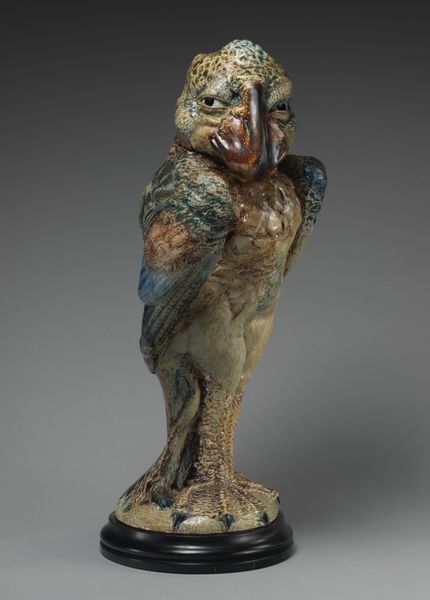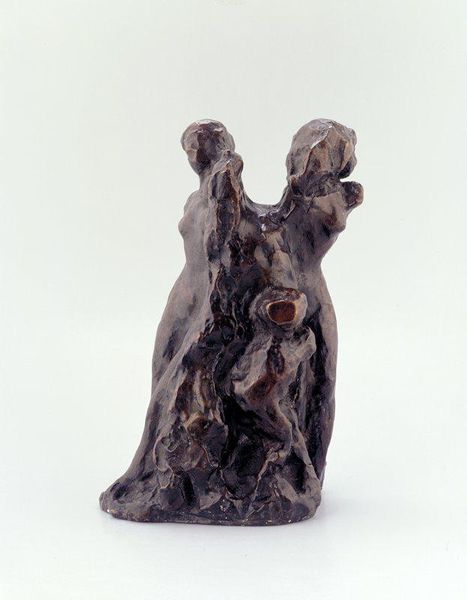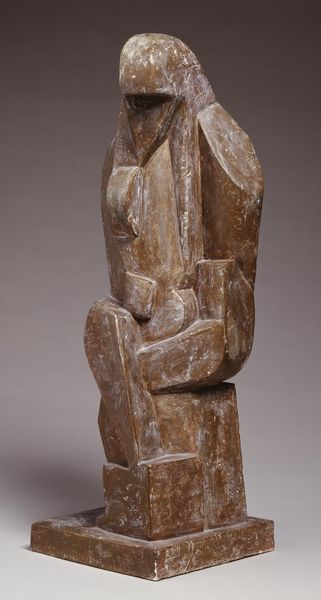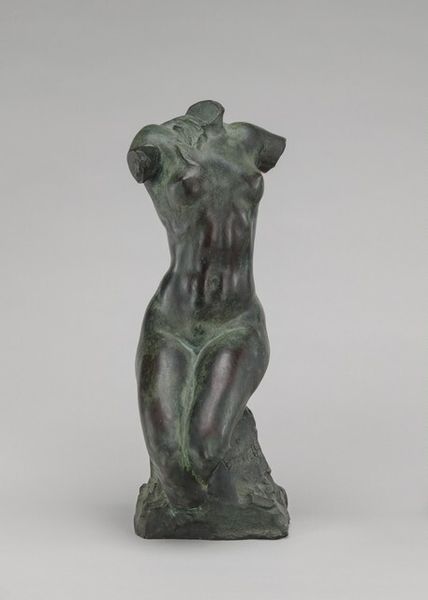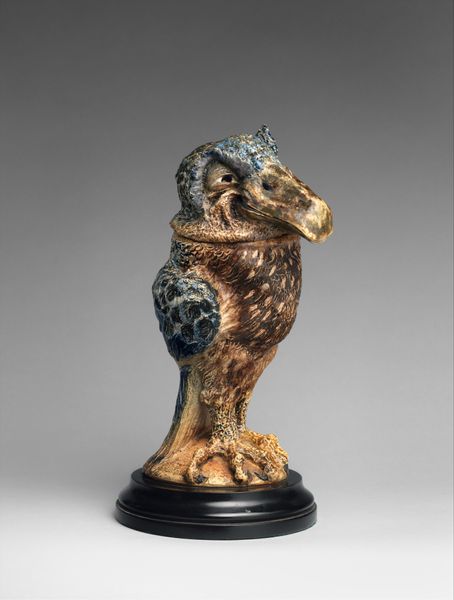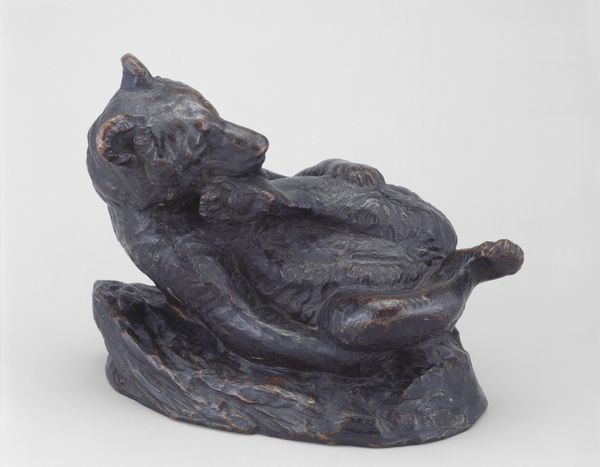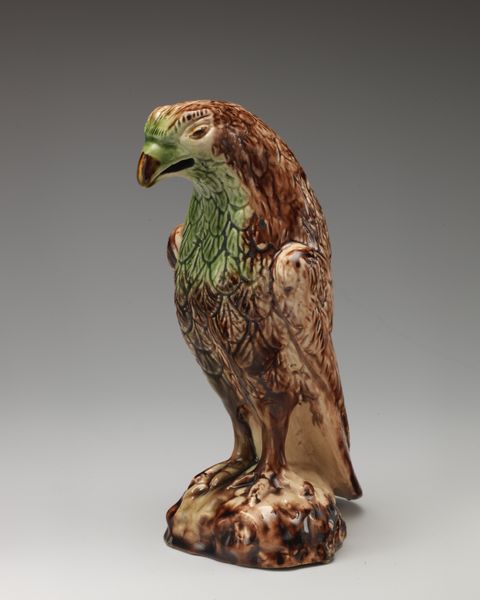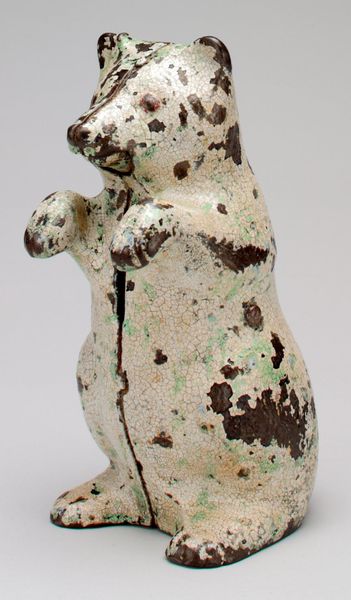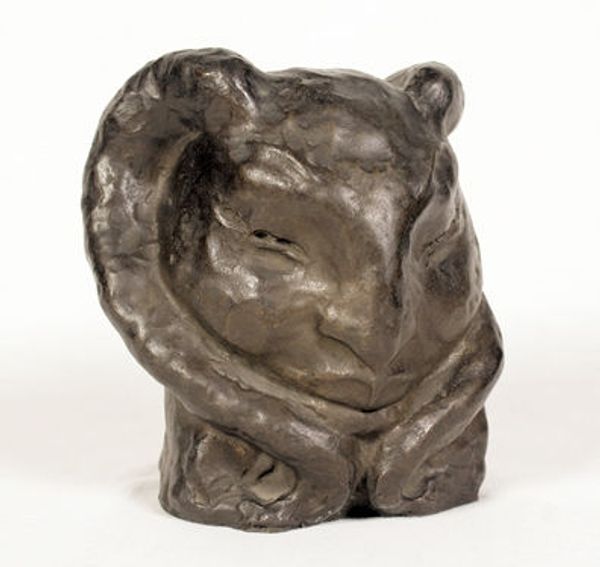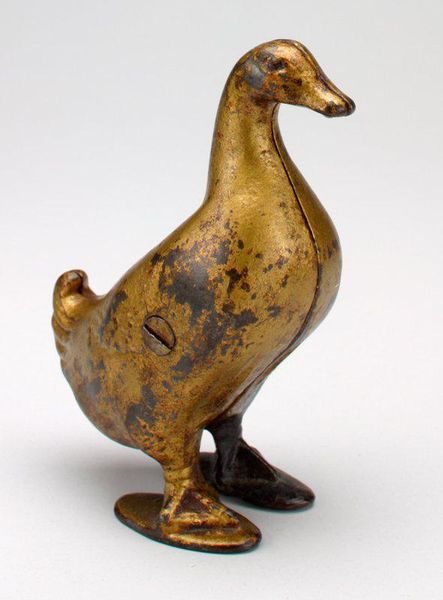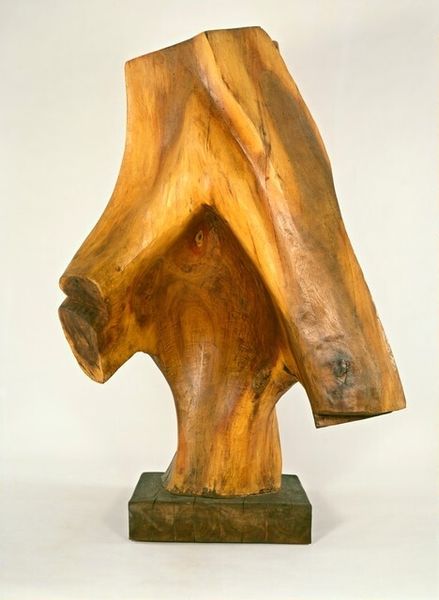
metal, bronze, sculpture
#
animal
#
metal
#
bronze
#
figuration
#
sculpture
Dimensions: 5 3/4 x 2 1/4 x 1 13/16 in. (14.61 x 5.72 x 4.6 cm)
Copyright: No Known Copyright
Curator: Here we have "-Owl", a bronze sculpture from around 1926. The artist, M. Elizabeth Cook, presents us with a stylized, almost abstracted form of the nocturnal bird. Editor: My initial impression is surprise at its weightiness—both literally, given the bronze, and figuratively. The solemn posture, combined with those intense orange eyes, gives it a very knowing, almost judgmental feel. Curator: That knowing quality speaks to the owl's long-standing association with wisdom and knowledge. This representation connects with artistic lineages reaching back to ancient Greece. However, it’s vital to consider the specific historical moment when Cook created this work. The 1920s were a time of intense social change and re-evaluation of established norms. How might the symbolism of the owl—typically seen as positive—take on new, more critical dimensions? Editor: It's those very eyes that captivate me. In iconographic tradition, an owl's large eyes often represent the ability to see clearly into the darkness, both literally and metaphorically. Cook emphasizes this by setting them in stark contrast to the dark patina of the bronze, creating a focal point that is both arresting and unsettling. Are we meant to feel observed, perhaps judged, by this figure? Curator: Precisely! Furthermore, consider the societal positioning of women artists during that era. This piece was produced when many doors to institutions remained closed for women, meaning they were fighting for professional recognition. What happens to the wisdom and vision if denied full expression? This sculpture can thus function as a powerful commentary. Editor: Looking closer, I also notice the stylized texture—it reminds me a bit of ancient Egyptian bronzes in the way the feather details are rendered with such stylized, almost geometric precision. Does that nod to the past give her authority? Curator: Absolutely, drawing inspiration from these earlier, dominant artistic styles would certainly be a tool of resistance. It makes me think about the silent narratives present when excluded artists enter cultural discourse through an uneven playing field. Editor: The symbolism, her deliberate invocation of older forms—it all weaves together a tapestry far richer than one might initially assume. Curator: Indeed, contemplating "Owl" compels us to actively engage with its historical, social, and symbolic layers, so thank you. Editor: I completely agree. Let’s hope it's looking down on us wisely!
Comments
No comments
Be the first to comment and join the conversation on the ultimate creative platform.

